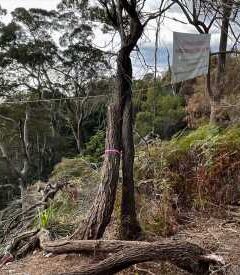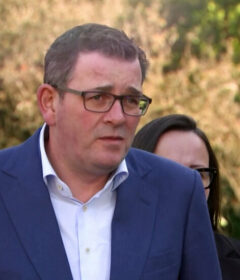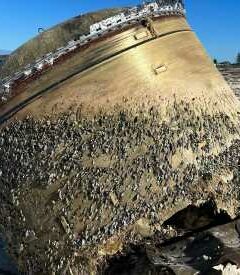Home » Australasia »
Hard Truths, Photography and Why We Should ‘Never Look Away’
The Australia Letter is a weekly newsletter from our Australia bureau. Sign up to get it by email. This week’s issue is written by Damien Cave, the Australia bureau chief.
__________
The photographs come from all over — Manila, Mosul and Caracas, remote Australia and rural Cuba. They capture people demanding dignity in every circumstance, and, having first appeared in The New York Times, their intent is to make you stop, look and think.
Now, for the first time in Australia, you can see them not on your phone or computer, but in an exhibit, called “Hard Truths.”
Hosted at the University of Melbourne through Oct. 11, it’s an effort to display our colleagues’ award-winning work in a fresh new way, in person and in large format. The experience is meant to be provocative — to raise questions about how the media represents the world and how the world responds to its ills, from war to poverty and climate change.
Last night, we held two events in support of the project. First there was a Q&A with Adam Ferguson, an Australian photographer who shoots all over the world for The Times. A panel discussion on global migration followed, with Julian Burnside, the human rights lawyer; Professor Karen Farquharson, who researches the sociology of race and identity, and Professor Michelle Foster, the inaugural director of the Peter McMullin Center on Statelessness at Melbourne Law School.
I was part of both discussions (at the risk of talking too much), and what I found striking and encouraging was the audience’s intense interest in how journalism can be done responsibly.
At the Q&A, students asked what we do to make sure those we cover feel as though they have a voice in the process. At the panel, we discussed how the media could improve its coverage of migration. I was also asked what journalists should do when they see other journalists failing to live up to basic ethical standards.
These are tough questions. I honestly don’t have an answer to the last one. As I told the crowd, I’ve often seen other journalists being rude or sensationalizing a major news event — like an earthquake or a mass shooting — and I’ve never known quite what to say.
With the other questions, though, I see clearer paths to more responsible journalism.
One thing I often do to make sure people I write about don’t feel burned and exploited is promise to come back to them before publication and read them the parts of my story that relate to them. I do this to make sure my characterizations are accurate, and to keep people from being surprised.
Especially for those who have shared sensitive personal experiences and haven’t dealt with the media much, I try to explain where they fit into the story — to make sure they understand the process. Sometimes people argue for changes, sometimes they ask why I wrote what I did, but in almost every case, the discussion ends positively and the person feels more included.
As for migration, I think there are some basic best practices that journalists can follow when writing about it. For example, I don’t use terms like “wave” or “invasion” when describing migrant inflows, especially not when it’s related to asylum seekers. That kind of language has been used for decades to stoke xenophobia, and it’s loaded — it suggests that migrants are always a threat.
Also, it’s important to rely on data to encourage reasonable (rather than emotional) debate. At one point on our evening panel, for example, Professor Foster asked the crowd to guess what percentage of all migrants coming to Australia arrive on humanitarian visas. One member of the audience guessed 40 percent.
The actual number? Two percent, if all temporary visas are included; 10 percent if you look only at permanent migrants who have arrived since 2000. In general, it’s far less than most people think.
“Hard Truths,” the photo exhibit, includes stark images from countries where many refugees come from — Iraq, Cuba and Venezuela among them. And it’s worth asking whether the media’s attention to these places contributes to the perception that asylum seekers are far too numerous for wealthy, successful countries like Australia and the United States to handle.
But by the same token, what would the world be like without these images that aim to help us understand? Maybe it’s not the images that are the problem so much as the way they are interpreted and used for politics. How we handle them is up to us. They present us with an opportunity — if only we’ll engage.
As Julian Burnside said at the end of our panel last night, citing the name of a documentary film about Germany and its history of hate: “Never look away. Never look away.”
Below is a small sample of images from the show, which includes many more. To see them all, stop by the Arts West Atrium — and as always, let us know what you think at [email protected].
Australia and New Zealand
Australia Bushfires Arrive Early, Destroying Historic Lodge in ‘Omen’ of Future: Officials warned that climate change and drought threatened to bring Australia its worst fire season on record.
Host Violent Content? In Australia, You Could Go to Jail: Australia has held itself up as a model for cracking down on violent extremist material online since the Christchurch massacre in New Zealand. But the limits to its approach have become clear.
Three Australians Are Being Held in Iran, Government Says: The Australian government said it was providing consular assistance to the families of those detained, and it reminded travelers that they risk arbitrary detention when visiting Iran.
Read more about Jolie King and Mark Firkin, a couple who documented a once-in-a-lifetime journey on social media and a website — until the posts suddenly stopped.
In the South Pacific, a Humpback Whale Karaoke Lounge: Male humpbacks sing songs that are distinctive to their breeding grounds. A gathering spot 700 miles from New Zealand may explain why the songs evolve from year to year.
In Australia, Television ‘Content’ Designed for Your Phone: A new show from Australia’s national broadcaster is shot on smartphones and should be watched on one, too.
A Bit of Australia in Every Watch: At Bausele, timepieces contain beach sand, red dirt from the outback, tile from the Sydney Opera House and more.
Golf Homes With an Ocean View Are in Demand: Golf communities near the water in Australia have held their appeal, even for people who aren’t golf enthusiasts.
Around The Times
She Fled the 68th Floor. She’s Finally Dealing With 9/11 Trauma: She had a foreclosure and two drunken-driving convictions before she was diagnosed with PTSD.
Who Is Caroline Calloway? An Explainer: The name might mean nothing to you, but the story of a minor influencer and her ghostwriter gripped part of the internet this week.
How to Make Your Smartphone Last Longer: Smartphones are more expensive than ever, but we still don’t keep them very long. Here’s why, and what you can do to extend their life.
The Planets, the Stars and Brad Pitt: With two major performances this year, the 55-year-old actor and producer talks frankly about his future onscreen, masculinity and getting sober.
Enjoying the Australia Letter? Sign up here or forward to a friend.
For more Australia coverage and discussion, start your day with your local Morning Briefing and join us in our Facebook group.
Damien Cave is the bureau chief in Sydney, Australia. He previously reported from Mexico City, Havana, Beirut and Baghdad. Since joining The Times in 2004, he has also been a deputy National editor, Miami bureau chief and a Metro reporter. @damiencave
Source: Read Full Article



